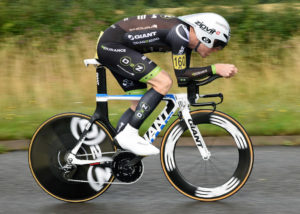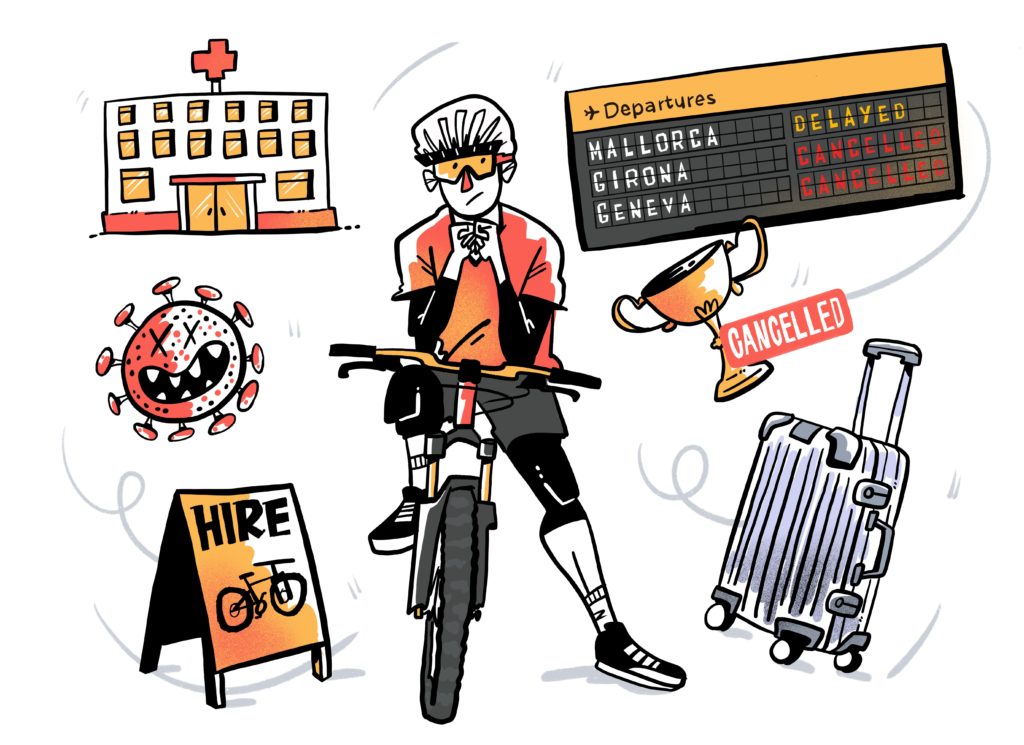Cycling should be for everyone. Traditionally, cycling and indeed cycle racing (I’m talking about road racing and time trial) was a working-class sport. Fast forward to the present day and you’d be hard pushed to believe that was ever the case. Since the Golden era of the 2012 London Olympics, Cycling has become the new golf, and for some, the perfect outlet to spend some serious cash. Yes, the technology has come a long way, and in recent times the strength of our currency has somewhat dwindled, but the fact remains that it’s relatively easy to spend over £12k on a bike, £400 on cycling shoes, and £160 on an aero jersey. Ouch.
Of course, no one needs to spend that sort of money on kit but it’s nice to be able to if you can, and why wouldn’t you?! Incidentally, the same principles apply to home turbo training ‘setups’. This got me thinking about refilling the distinct void in the corner of my garage which at one point in my life had a basic turbo trainer setup looking directly at a brick wall, with something a little more modern.
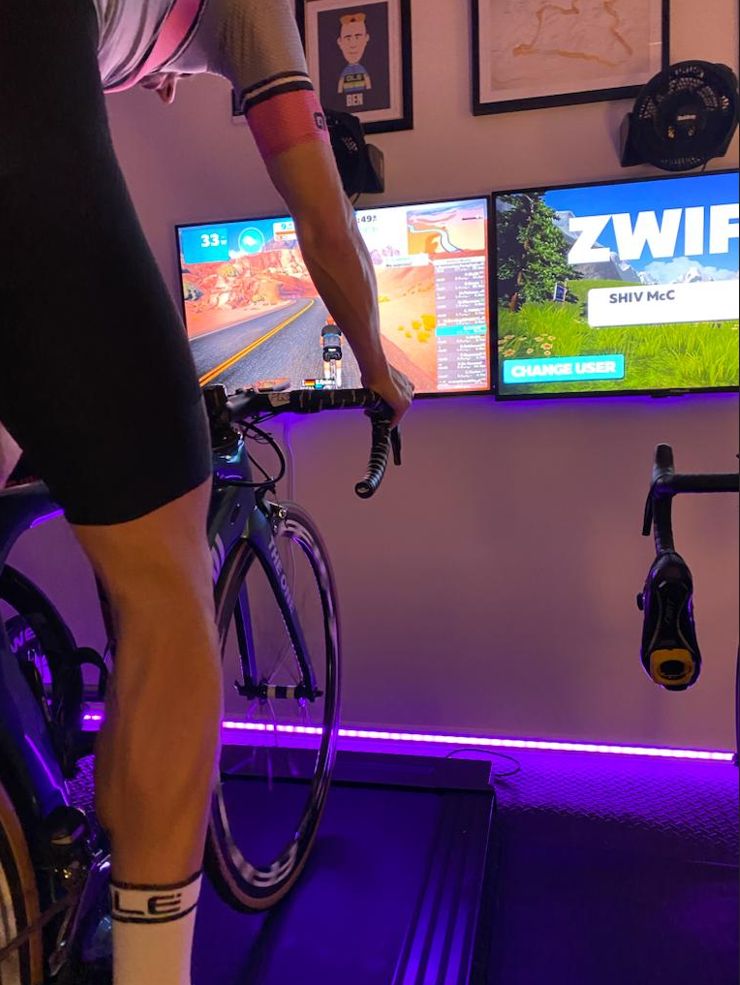
Thankfully, times have since moved on and the days of shivering away in isolation are numbered. With the advent of smart turbo trainers and online virtual cycling apps which use accurate real-time data, you can ride and race with anyone else in the world whilst utilising power to weight figures. In other words, a smart turbo system will give a realistic time and speed impression of your ability to ride up a mountain. For example, if you weigh 80kg and manage to sustain 250 watts vs someone who weighs the same but only manages 200 watts, the person with the higher power-to-weight ratio would get to the top of the mountain first and therefore win the race.
In this blog we take a look at the cost of four indoor winter training options for those who may not have much money to spare, and those who have money to burn.
Firstly, it’s worth considering what you actually want to get out of this, how much are you going to ride, and whether is it even worth spending the money on a turbo trainer in the first instance or are you better off buying some nice winter kit? Winter in the UK is tough with group rides neigh on impossible after work hours.! If you’re going to commit to 2-3 sessions a week and want to ride within the safety and warmth of your own home then it’s a no brainer…
Basic –Full setup: under £100
Before you skip to an all-singing and all-dancing ‘sky’s the limit’ setup, just consider that as with any sport, pastime or even work venture, consistency is key. Someone who rides or trains consistently using the most basic of setups 3-4 times per week will always outperform their identical but inconsistent twin who might ride once a week but on a decent setup.
Wading in at approx. £70 is the magnetic turbo. This is pure old school tried and tested tech which for some (dare I say myself) would have formed a large portion of their training. Simple to use and set up, these trainers don’t require any electricity or special tools to operate. Swap your rear tyre for a turbo tyre (normal tyres burn out on turbo trainers), attach your bike and go. The likelihood is that you’re going to have to ride on ‘feel’ alone so get yourself some classic cycling stages on YouTube. If you skip to the final 30km then you ought to have a fairly decent workout by the end. This setup is primitive at best and it cannot be compared to the sociable aspect offered by the modern alternative options
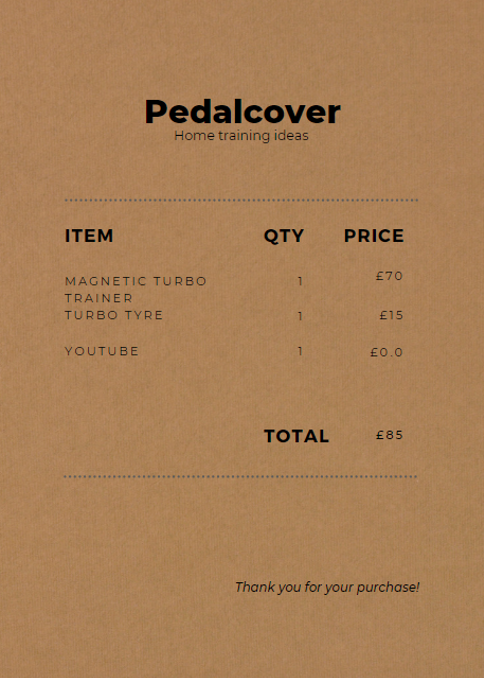
The middle ground-Basic turbo trainer with Powermeter: Under £350
By far the most economical way to get into the world of online/smart training is to upgrade your bike so that it has an ANT+ compatible power meter. ANT+ powermeters communicate with Bluetooth devices such as Garmin/Wahoo GPS units so that you can instantly see the wattage you are producing. Although most modern laptops have Bluetooth capability, you will probably require a Bluetooth ANT+ receiver dongle which then sends your power data to the training program you’re using. Without this, your computer won’t know that you’re pedalling. I have not included the cost of the laptop or smartphone, as this is something that most people would already own.
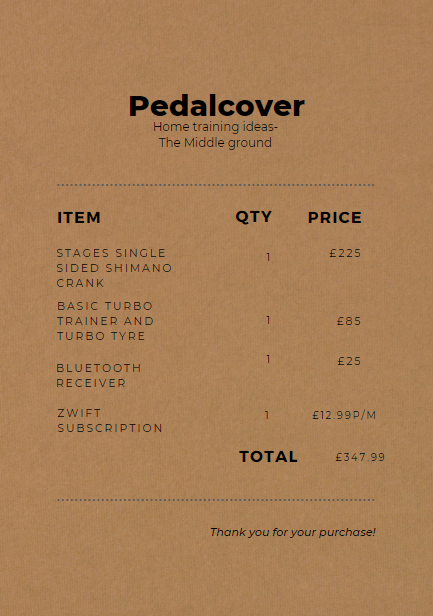
Ideal-Smart turbo trainer: Under £550
Although the last setup we looked at will work just fine, the easiest and most hassle free way to get into the smart turbo world is to buy a smart turbo trainer. A modern smart turbo trainer is usually direct drive (you take out your back wheel and mount the bike to the turbo itself) and will have an inbuilt powermeter. You can pretty much stick any bike onto the trainer, connect it to your laptop, et voila, off you go! Smart turbo trainers also have the ability to automatically adjust their resistance based on the ‘terrain’ you’re riding. In other words, when you come up to a hill on Zwift, the resistance will automatically increase just as if you were riding up a hill on the road. Likewise, the resistance will also decrease when you go downhill or draft behind someone you’re riding with.
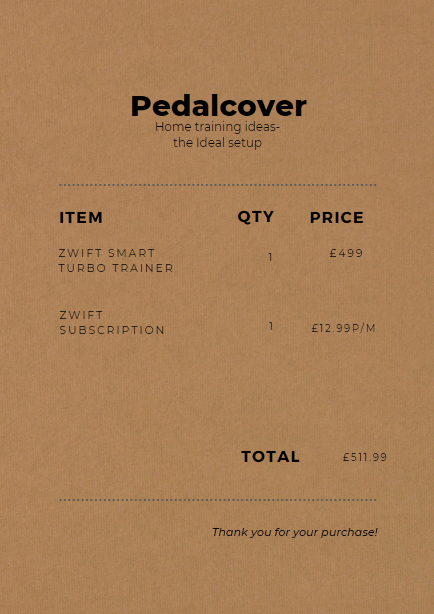
The sky’s the limit -Smart turbo bike: £1000+
The beauty of having a designated smart bike is that it means you can keep your road bike separate from your training room. This sort of setup is ideally suited if you have a designated room or indoor gym in your house, which is separate to where you store your bikes. Smart bikes are infinitely adjustable, ultra-quiet in their operation, and provide top-level accuracy. In addition to automatic resistance adjustments that we see on smart turbos, the smart bikes go a step further and adjust the angle of the bike to replicate going up or down hill. Of course, they still need to be plugged into a pc/laptop or phone to work. With a rig as good as this, you want to be aiming for a large LCD screen to make the most of the immersive experience. As with other Wahoo products, you can purchase a Kickr Headwind Bluetooth fan which will simulate the wind you’d normally feel when riding.
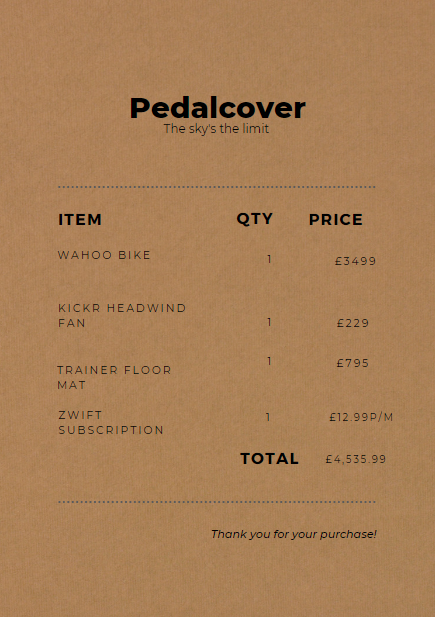
Top tips when turbo training
- Hydrate (lots). It’s really easy to dehydrate when riding a turbo trainer because you don’t have the wind keeping you cool. Before getting on the bike, make sure you’re fully hydrated and have plenty of fluid to keep you going on the ride.
- If possible, use a fan to help keep you cool.
- As with any sport, it’s important to take the time to stretch once you have finished your exercise. Cyclists are renowned for not stretching which over time will lead to stiffness and eventually pain when riding. Keep on top of it!
- Always wear clean kit-it goes without saying, always wear clean kit! If you’re wearing unclean/used kit, you increase the risk of skin irritation and infections. Not nice.
- Wipe down bike after use- Easy to forget but it’s surprising how corrosive your sweat can be on your bike components, in some cases causing metal bolts to corrode prematurely. Give your bike a wipe down and anti bac your bar tape to increase its longevity.
- Check out your Pedalcover perks where you can find discounts on an array of smart turbo products
- Have fun
On a Pedal Cover home & bicycle insurance policy, you do not need to list your smart turbo regardless of its value. We can provide up to £10,000 of cover if your setup is in an outbuilding. For turbo trainer setups within the house, there is no limit to the total setup cost as it would fall within the general contents sum insured. For any further queries, just give our support team a call on 0800 121 4424





